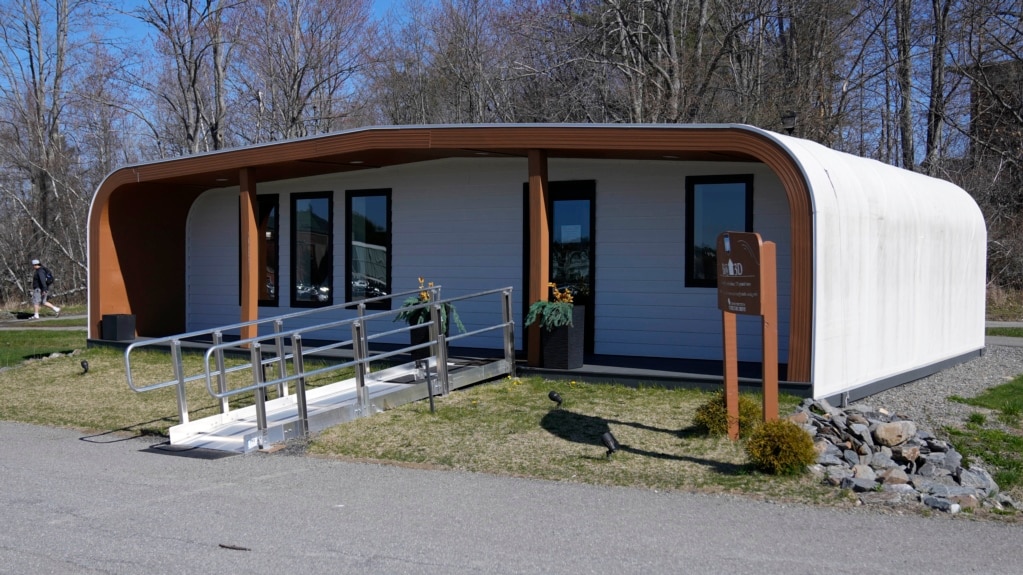American researchers have developed a new model of what they say is the largest 3D printer in the world.
The device is designed to build full-sized homes faster and for less money than traditional methods.
A team at the University of Maine said the printer is four times larger than the last one the university built in 2019. That device was named the world’s largest polymer 3D printer by the Guinness World Records organization.
Developers of the new printer said it can create objects up to 29 meters long, 10 meters wide and 5.5 meters high. The machine can use up to 227 kilograms of printing materials per hour.
It was recently introduced to the public during an event at the university in the town of Orono. The latest model received new robotic abilities, additional sensors and artificial intelligence (AI) technology, said Habib Dagher. He leads the project for the University of Maine’s Advanced Structures & Composite Center.
Dagher noted his team could build even larger printers in the future after the university opens a new building this summer. “We’re learning from this to design the next one,” he said.
The old 3D printer was used in 2022 to build a 55-square-meter model home made from a mixture of wood fibers and a plant-based plastic material. The home, called BioHome3D, was first printed in four parts before the pieces were moved to a permanent spot at the university. A team then connected the pieces and completed the building in just a few hours.
Officials in Maine said such large 3D printers might be able to help the state meet a growing demand for housing. State housing officials have suggested Maine will need to build another 80,000 homes over the next six years to keep up with demand.
The university aims to demonstrate that homes can be built almost completely with printers that do not harm the environment. The United Nations Environment Programme estimates that building-related industries produce about 37 percent of greenhouse gases. The gases come from the production and use of materials including cement, steel and aluminum.
3D printed buildings can also be recycled, which is unusual in the building industry. “You can basically deconstruct it,” Dagher said. “You can grind it up if you wish, the 3D printed parts, and reprint with them, do it again.”
Dagher added that in addition to cutting down on building time and costs, the 3D printer was designed to make homes that look nice. “We wanted to build a house that people would say, ‘Wow, I really want to live there.’”
The team said it plans next to experiment with different printing materials. The researchers would like to use more wood found locally since Maine is the most heavily forested state in the U.S.
The machine can also be used to print other objects, such as boats or government structures, the developers say. Dagher said upcoming projects with the new printer will include a large boat and small homes to serve the area’s homeless population.
University of Maine Chancellor Dannel Malloy said the U.S. Army Corps of Engineers provided most of the money for the printer, which cost several million dollars.
I’m Bryan Lynn

